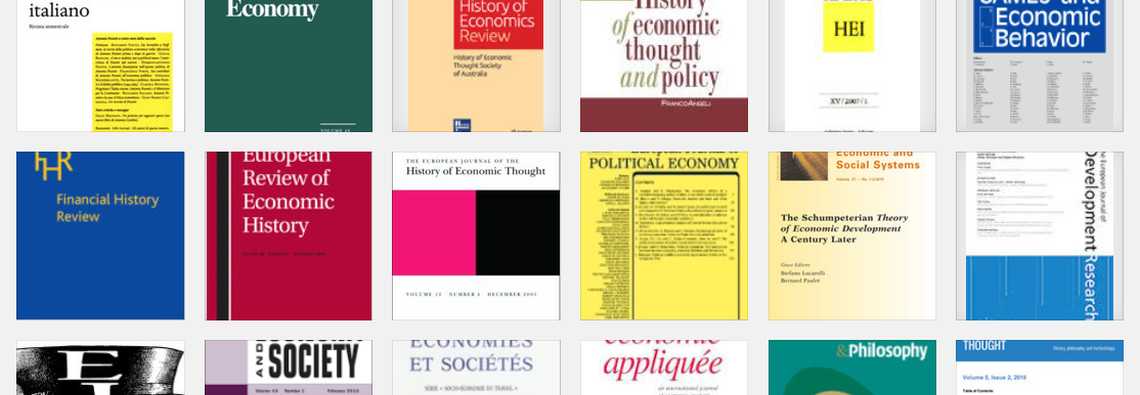How economics is changing: A multilayer network analysis of the recent evolution of economics journals, between specialization and self-referentiality (1980-2020)
Aree / Gruppi di ricerca
Partecipanti al progetto
- Ambrosino Angela (Ricercatore)
- Fiori Stefano (Ricercatore)
- Cedrini Mario Aldo (Coordinatore)
Descrizione del progetto
 The economics discipline is admittedly changing, by growing in size and variety, under the impact of research specialisation. The monolithism of “economics imperialism” has been replaced by a multiplicity of mainstream research programs, which significantly deviate from the neoclassical core, have their origins in other disciplines, and are pursued by separate communities of scholars.
The economics discipline is admittedly changing, by growing in size and variety, under the impact of research specialisation. The monolithism of “economics imperialism” has been replaced by a multiplicity of mainstream research programs, which significantly deviate from the neoclassical core, have their origins in other disciplines, and are pursued by separate communities of scholars.
Specialised economics journals express the shared goals, practices, and language of different research communities. Their increasing importance might therefore not only reflect today’s fragmentation, but also signal that journals themselves have started playing an active role in shaping the ambitions, norms, and vocabulary of economics communities. The project aim is to understand whether journals have become a major force in structuring economics: we will focus on journals (1980 to 2020) as units of analysis, and particularly on patterns of specialisation and self-referentiality, which might be helpful in grasping also the recent evolution of economics.
The approach is exploratory and data-driven. It consists of representing economics journals and their relations as a temporal multilayer network. It is a collection of individual networks - layers -, each having a set of nodes and edges representing specific relations between nodes. Each layer is defined in reference to a specific temporal period, and interlayer edges define relations between layers. Nodes are here economics journals, and edges represent relations between journals that are defined in reference to various types of information. We will consider:
1) topic profiles of journals, obtained through text-mining techniques;
2) citation profiles, extracted by applying the bibliographic coupling techniques to the cited references of articles published by journals;
3) social profiles, based on the communities of authors who publish in a journal, but also members of editorial boards, who influence, as gatekeepers, the selection of articles to be published;
4) institutional profiles, built by considering the affiliations of authors and editors to academic and non-academic institutions (central banks, think tanks, non-profit organisations, and firms);
5) geographical profiles, inferred from countries of affiliations of authors and editors. Each of these elements can provide actual or potential, explicit or tacit connections between journals. Relationships between journals, in their turn, result from the interweaving of conceptual, social, institutional, and economic links, which change with varying times and circumstances.
The proposed analysis and resulting maps of economics journals will permit us to define clusters, also in historical perspective, and to analyse their structure and dynamics. We will thus identify possible markers of specialisation and self-referentiality for economics journals which can then be employed for discussing the evolution of a more and more fragmented economics.




